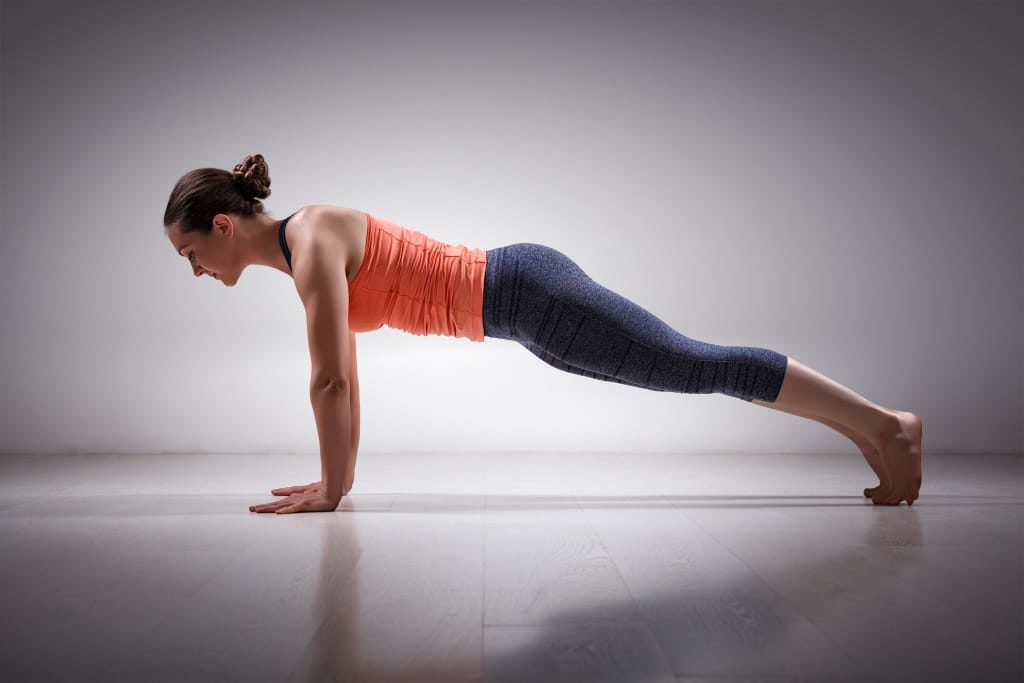Does something feel not quite right when you do a squat? You feel like you know what a squat is supposed to look like, but you’re not sure you’re feeling it where you should. You are quite sure your knees shouldn’t be the first place you feel it. You’ve tried asking the personal trainer working on the floor at your gym, but he treats you like an outsider and tries to get you to use the leg extension machine instead. Frustrated and confused, you retreat to the cardio room and your trusted elliptical.
You belong in the weight room just as much as the grunting guys at squat rack bar. Don’t let form frustrations keep you from taking on challenging free weight workouts. It is easier to fix common exercise form mistakes than you think.
How to fix common exercise form mistakes
With over a decade of experience as a personal trainer, I can easily name the most common exercise form mistakes and give you tips on how to fix them. However, you may need to venture out of your gym comfort zone to claim some space closer to the weight racks.
How to check your form
As uncomfortable as it may feel at first, working out in front of a mirror can be extremely helpful for fixing your form. I’ve been lifting weights for over 20 years and I still use the mirror to help me keep my alignment. If you don’t have a mirror available, you might even consider taking a video of yourself doing the exercise in question. We can sometimes see things in a video or photo that we can’t see in a mirror or feel when we are in the moment.
Practicing a movement pattern without weight as part of your warm-up can help also you improve your form. I love the squat to stand movement in the warm-up video below as a way to open the hips and teach what a squat should feel like.
Correcting your squat form
Speaking of squats, the most common squat form issues I see are both knee-related. The first problem is starting the squat by pushing the knees forward. Squats are basically like sitting in a chair, which starts by pushing the hips back. The easiest way to correct squats is to practice in front of a chair or a bench. Practice sitting back to gently tap the chair or the bench with your hips. Keep your weight in your heels, not the balls of your feet, and let the knees follow the hips.
The second problem I see, especially when someone is trying to lift too much weight, is the knees collapsing in. The next time you do a squat look at your knees in the mirror. As you sit back, the knees should track slightly out. If you see them start to roll in (knock knees) you need to take your weight down and add a new resistance tool to your squat – the mini band. Before your next round of weighted squats, practice squatting with a mini band around your knees. The force of the band will prompt your knees to stay in the proper position. You can try keeping the band on while you do goblet squats or overhead squats with a lighter weight as a progression.
Correcting your lunge form
The lunge pattern tends to suffer from a similar problem. Often, I see a lunge performed as one forward motion, putting the weight into the ball of the front foot. Instead, a lunge should be performed as two motions. First, the step forward (or back for a reverse lunge) and then the bending of the knees. By keeping the weight in the heel of the front foot, you’re taking the pressure off the knees. This often corrects the knee pain many people feel when they do lunges. You also want to make sure the knee stays over the ankle, keeping a vertical shin, and allowing some space between the feet. In other words, think about your feet being on train tracks, not heel to toe like you’re on a tight rope. Check out a video I did on Facebook to see these lunge tips in action.
Correct your kettlebell form
Kettlebell work, particularly kettlebell swings, is a great way to train the whole body and get your heart rate up in a low impact way. However, a proper kettlebell swing can be challenging to learn because it relies on the hip hinge movement pattern, not our common squat pattern. I see too many people trying to squat and then lift the kettlebell with their arms. The hip hinge movement creates momentum, allowing the kettlebell to swing without help from the arms. Also, beware of trying to lift the kettlebell with your arms and pushing your hips forward in the process. This can lead to hyperextension in the back and back injury. Watch this video from one of my favorite coaches, Rachel Cosgrove, to help perfect your form.
Correcting your plank form
The name says it all. Plank means straight like a board. To do it properly, you need to think of one straight line from the top of your head to your tailbone. Too often I see hips lifted in the air (like a baby down dog) or sway in the low back. There are two cues that I learned in yoga class that can help. First, tuck your tail bone under. This helps eliminate the sway in the low back, engage the core and keep the hips in line with the spine. Then pull your forearms toward the body, like your trying to pull your mat towards your toes. This helps you draw down your shoulder blades and align your posture.
These tips may be all you need to eliminate the knee pain you’ve been feeling in your squat. But if you still feel like you’re not doing something right, a personal trainer who will take the time to listen to your goals and assess your existing patterns can help. I know there is a need for detailed instruction on specific problems as well as accountability to stay with a workout plan and create new habits. In addition to my supportive small group personal training, I am now offering one on one private personal training sessions to help with specific training goals and patterns. Whether you need a full service plan or just a tune-up, I can help. Click here for more details on my services.




